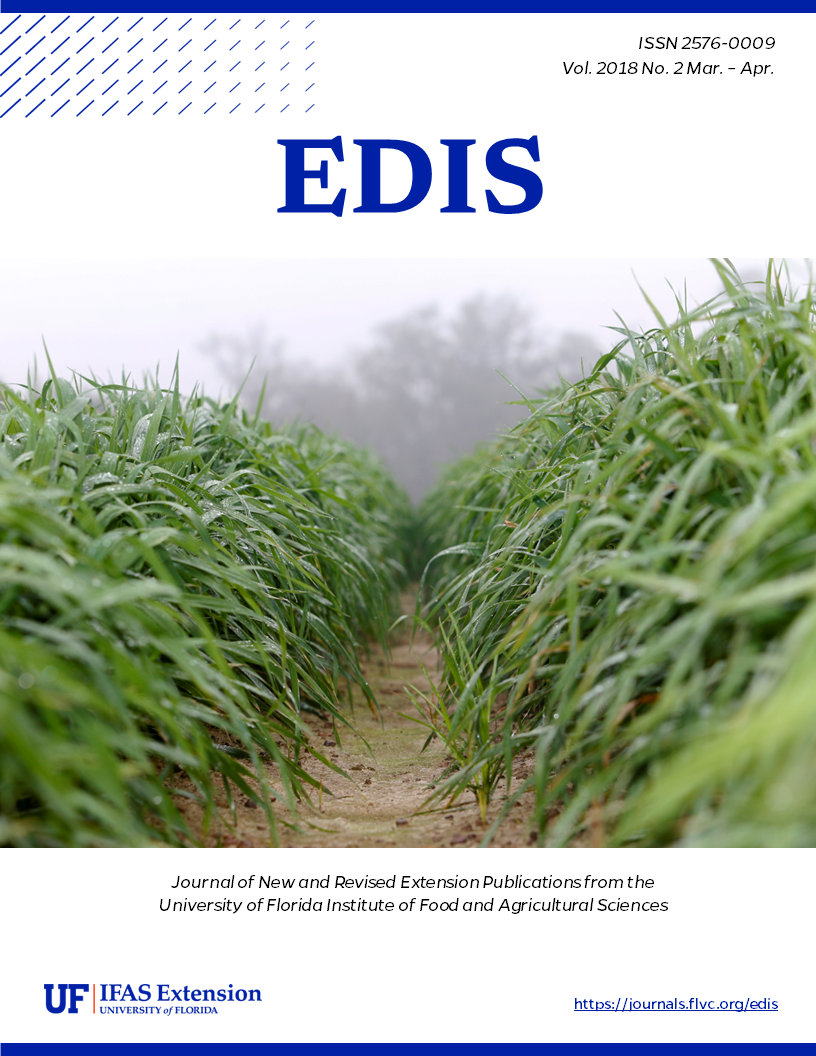Resumen
Phoneutria are nocturnal hunters that actively forage and overcome prey with potent venom rather than relying on a web for prey capture. Members of the genus are among the most medically important spiders in the world (Vetter and Isbister 2008).
https://edis.ifas.ufl.edu/in1207
Also available at: http://entnemdept.ufl.edu/creatures/URBAN/SPIDERS/armed_spider.html
Citas
Bucaretchi F, Bertani R, De Capitani EM, Hyslop S. 2016. "Envenomation by wandering spiders (genus Phoneutria)." In: Gopalakrishnakone P. (editor). Clinical Toxinology, Springer, Berlin, Germany. https://doi.org/10.1007/978-94-007-6288-6_63-1
Bucaretchi F, Mello SM, Vieira RJ, Mamoni RL, Souza MH, Antunes E, Hyslop S. 2008. "Systematic envenomation caused by the wandering spider, Phoneutria nigriventer, with quantification of circulating venom." Clinical Toxicology 46: 885-889. https://doi.org/10.1080/15563650802258524
Bucherl W. 1969. "Biology and venoms of the most important South American spiders of the genera Phoneutria, Loxosceles, Lycosa, and Latrodectus." American Zoologist 9: 157-159. https://doi.org/10.1093/icb/9.1.157
Dias MA, Simo M, Castellano A, Brescovit AD. 2011. "Modeling distribution of Phoneutria bahaensis (Araneae, Ctenidae): An endemic and threatened spider from Brazil." Zoologia 28: 432-439. https://doi.org/10.1590/S1984-46702011000400004
Foerster NE, Carvalho BHG, Conte CE. 2017. "Predation on Hypsiboas bischoffi (Anura: Hylidae) by Phoneutria nigriventer (Araneae: Ctenidae) in southern Brazil." Herpetology Notes 10: 403-404.
Gomez MV, Kalopothakis E, Guatimosim C, Prado MAM. 2002. "Phoneutria nigriventer venom: A cocktail of toxins that affect ion channels." Cellular and Molecular Neurobiology 22: 579-588. https://doi.org/10.1023/A:1021836403433
Hazzi NA. 2014. "Natural history of Phoneutria boliviensis (Araneae: Ctenidae): Habitats, reproductive behavior, postembryonic development and prey-wrapping." Journal of Arachnology 42: 303-310. https://doi.org/10.1636/Hi13-05.1
Herzig V, Ward RJ, dos Santos WF. 2002. "Intersexual variation in the venom of the Brazilian "armed" spider, Phoneutria nigriventer (Keyserling 1891)." Toxicon 40: 1399-1406. https://doi.org/10.1016/S0041-0101(02)00136-8
Herzig V, Ward RJ, dos Santos WF. 2004. "Ontogenetic changes in Phoneutria nigriventer (Araneae, Ctenidae) spider venom." Toxicon 44: 635-640. https://doi.org/10.1016/j.toxicon.2004.07.020
Lucas S. 1988. "Spiders in Brazil." Toxicon 26: 759-772. https://doi.org/10.1016/0041-0101(88)90317-0
Martin-Moutot N, de Haro L, dos Santos RG, Mori Y, Seagar M. 2006. "Phoneutria nigriventer small omega-phonetoxin IIA: A new tool for anti-calcium channel autoantibody assays in Lambert-Eaton myasthenic syndrome." Neurobiology of Disease 22: 57-63. https://doi.org/10.1016/j.nbd.2005.10.003
Martins R, Bertani R. 2007. "The non-Amazonian species of the Brazilian wandering spiders of the genus Phoneutria Perty, 1833 (Araneae, Ctenidae), with the description of new species." Zootaxa 1526: 1-36. https://doi.org/10.11646/zootaxa.1526.1.1
Nentwig W, Kuhn-Nentwig L. 2013. "Spider venoms potentially lethal to humans." p. 253-264. In Nentwig W (editor). Springer, Berlin, Germany: Spider Ecophysiology. https://doi.org/10.1007/978-3-642-33989-9_19
Pacheco EO, Ferreira VG, Pedro FMSR, Santana DJ. 2016. "Predation on Scinax crospedospilus (Anura: Hylidae) by Phoneutria nigriventer (Araneae: Ctenidae) in an Atlantic Forest fragment in southeastern Brazil." Herpetology Notes 9: 315-316.
Simo M, Brescovit AD. 2001. "Revision and cladistics analysis of the Neotropical spider genus Phoneutria Perty, 1833 (Araneae, Ctenidae), with notes on related Cteninae." Bulletin of the British Arachnological Society 12: 67-82.
Torres-Sanchez MP, Gasnier TR. 2010. "Patterns of abundance, habitat use and body size structure in Phoneutria reidyi and P. fera (Araneae: Ctenidae) in a central Amazonian forest." Journal of Arachnology 38: 433-440. https://doi.org/10.1636/P08-93.1
Vetter RS, Hillebrecht S. 2008. "Distinguishing two often-misidentified genera (Cupiennius, Phoneutria) (Araneae: Ctenidae) of large spiders found in Central and South American cargo shipments." American Entomologist 54: 88-92. https://doi.org/10.1093/ae/54.2.88
Vetter RS, Crawford RL, Buckle DJ. 2014. "Spiders (Araneae) found in bananas and other international cargo submitted to North American arachnologists for identification." Journal of Medical Entomology 51: 1136-1143. https://doi.org/10.1603/ME14037
Vetter RS, Isbister GK. 2008. "Medical aspects of spider bites." Annual Review of Entomology 53: 409-429. https://doi.org/10.1146/annurev.ento.53.103106.093503

